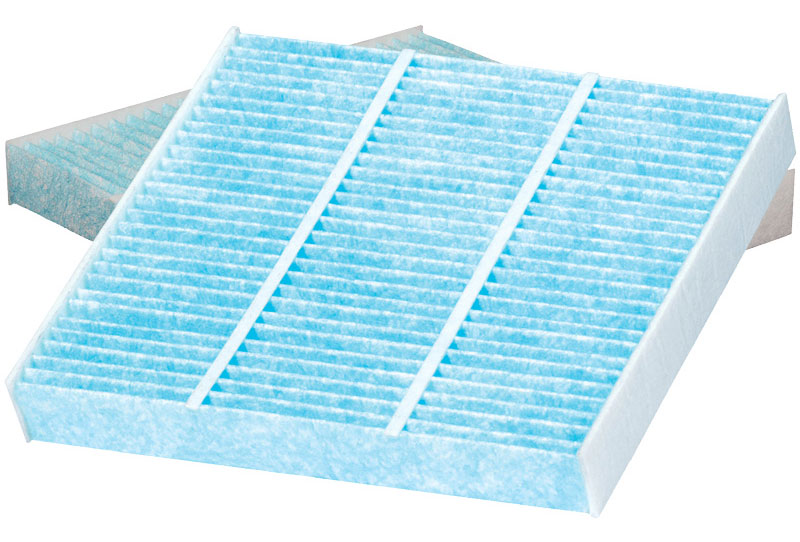To ensure a pleasant atmosphere at all times when driving, pollen, dust and pollutants first have to be removed from the fresh air being drawn in. Cabin filters from Bosch not only protect your health, but also the air conditioning system in your car. Activated charcoal cabin filters provide additional protection against odors and harmful gases. The material used is obtained by the destructive distillation of natural coconut shells with the exclusion of air. The steam required to form the honeycomb structure is heated to a temperature of up to 800 °C. As a result, the internal surface area of 1 gram of activated charcoal is around 1,000 m2 – in other words, one teaspoon full roughly corresponds to the size of a football pitch.

Key Features
- Bosch engineered cabin air filters fit a majority of the cars on the road in the Philippines today that come equipped with a cabin filter
- Carbon Cabin filters that are offered are Charcoal lined filters that provide deodorizing agents
- Carbon and non-carbon offering
- 80% efficiency in capturing dirt, dust and other environmental contaminants
- The best defense against microscopic particulates from entering the vehicle’s cabin
Cabin filters from Bosch – to keep everything clean
- Three fiber layers filter the air drawn in
- Odors and harmful gases are effectively absorbed by the activated charcoal layer
- Electrostatic charging ensures filtering-out of even the smallest particles which could enter the lungs
- Reliable operation between -40 and +85 °C
Frequently Asked Questions
| 1. | How often should inspect my cabin air filter? |
|
Over 5 million cars on the road need cabin air filters replaced, however most consumers are not aware they even have one. Cabin air filters should be inspected at least once-a-year, however Bosch recommends following the manufacturer manual for procedures for servicing a vehicle. |
|
| 2. | How can I tell if I need to replace my cabin air filter? |
|
Hold the existing filter up to a light and attempt to see through the media. If you cannot see through it, it may need replacing. If you don't remember ever changing your cabin air filter, it may be time to replace it. |
|
| 3. | How do I remove my existing cabin air filter and install a new one? |
|
Almost half of the vehicles that come equipped with a cabin air filter have the filter positioned inside of the glove compartment on the passenger side of the vehicle under the dashboard. After simply opening the glove box door, removing or “dropping” the door will expose the location of the Cabin filter. There should be a “plate” that should be gently pushed and pulled out to reveal the cabin air filter. Some vehicles come equipped with a specific housing in which the cabin air filter sits into, some vehicles do not have this housing. Gently remove the cabin air filter and ensure the new cabin air filter is the correct filter (ensuring the filter is the correct side up to the air flow) and place back into the housing. For cabin air filters that are located under the hood or under the dashboard, this may require a more specialized installation. Always refer to the vehicle owner’s manual for all installations and locations of cabin air filters. |
